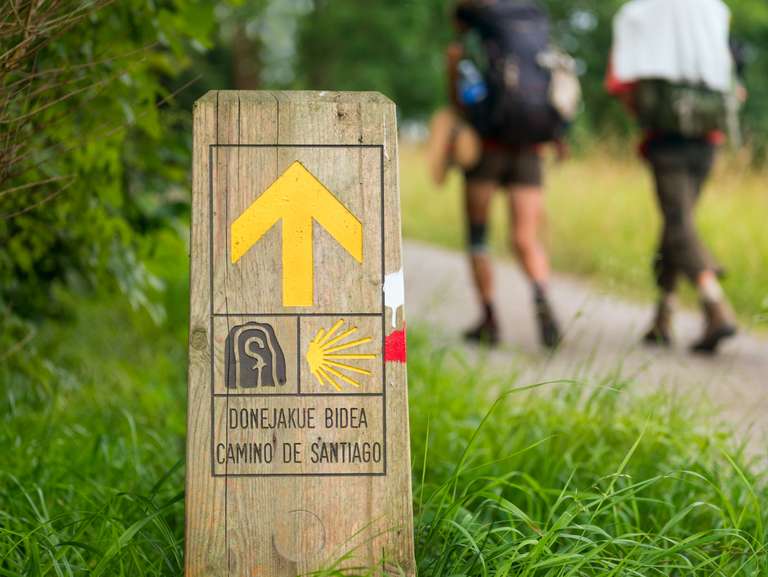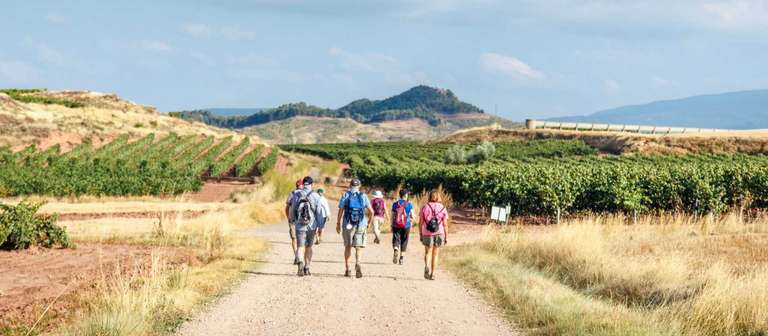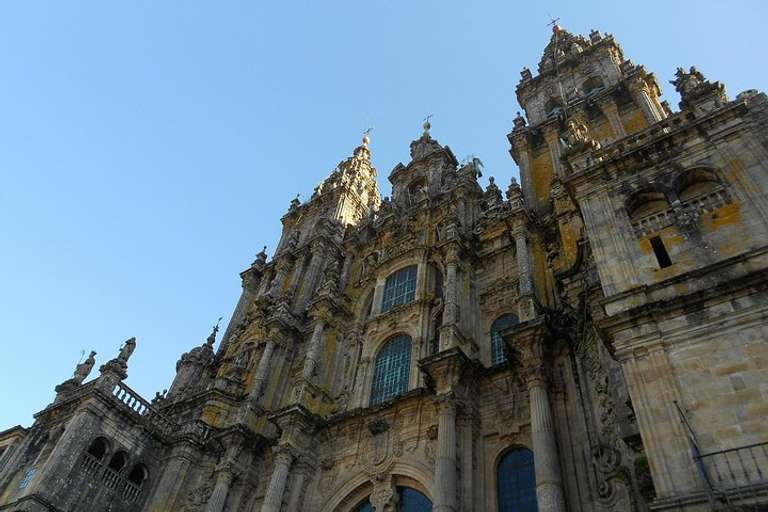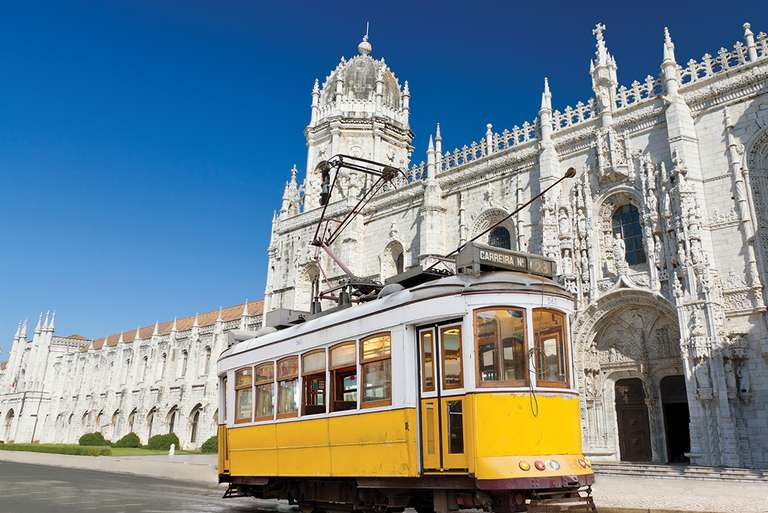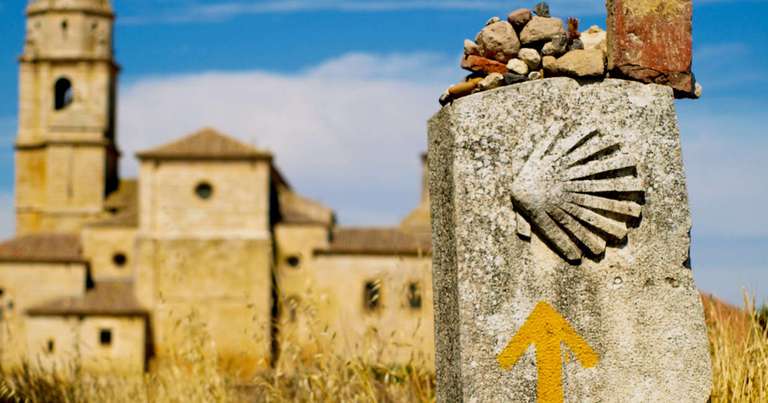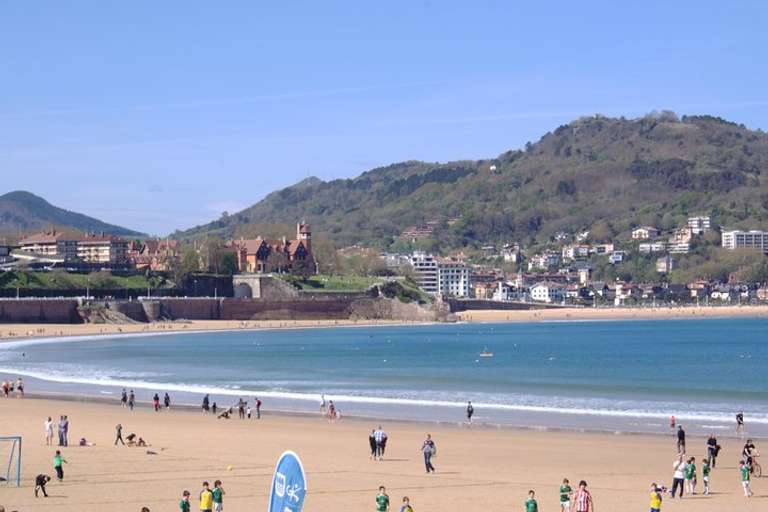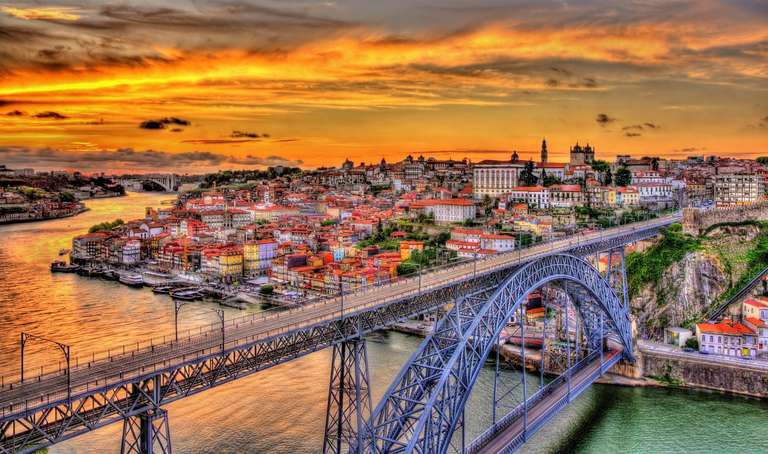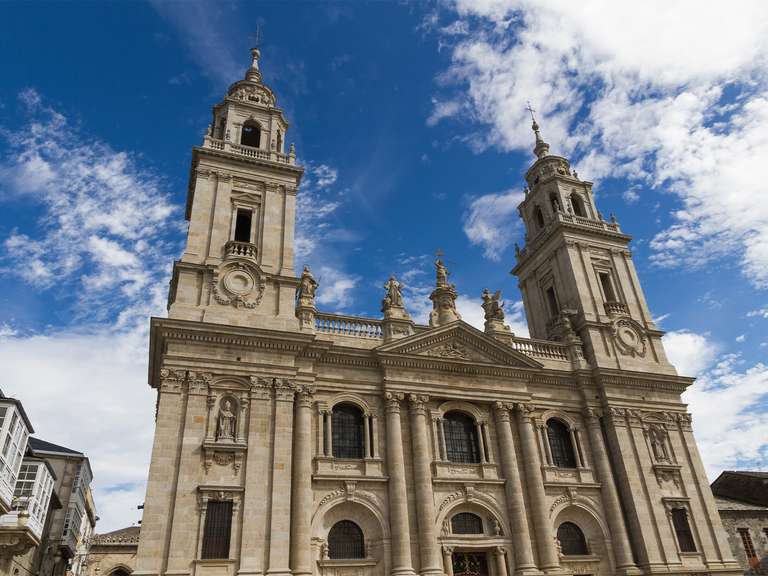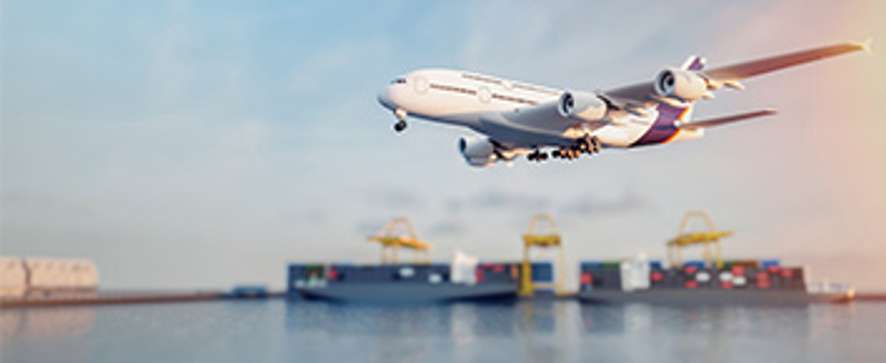The Camino Trail: The Ultimate Guide

- Mariam S
- From
- Mariam S
- From
- Brooke T.
- From
- Olivia D
- From
1. Camino Francés / The French Route

This is the most popular Camino trail and the reliable infrastructure makes it a good choice for first-time pilgrims. Over 100,000 pilgrims travel this UNESCO World Heritage site each year.
Highlights
- Good infrastructure and well signposted routes
- Opportunity to meet many other pilgrims
- Important architecture including cathedrals, churches and much more
Lowlights
- Busy, especially in summer
- Sometimes difficult to find accommodation
- Large numbers of pilgrims detract from authenticity
Route facts
| Start location | Saint-Jean-Pied-de-Port (France) or Roncesvalles (Spain) |
| Distance | 780 km |
| Duration | 4–6 weeks |
| Difficulty | Varied. The first part in the mountains can be challenging, the central section is easier and the final part in Galicia becomes tougher again. |
| Best time to go |
Spring (April to June) and autumn (September to October) |
Cycling: Much of the route can be cycled on a mountain bike; with a regular bicycle, the route can be cycled by taking minor roads where necessary.
2. Camino Portugués / The Portuguese Route

The second most popular Camino de Santiago walk, also packed with historical sites along the way, is the Portuguese Route, which offers a fascinating alternative to the more famous Camino Francés.
Highlights
- Fewer travellers from Lisbon to Porto make for a quieter and more peaceful experience
- Well-marked and easy to follow Camino trail
- Possibly more sites of historical interest than any other route
Lowlights
- Spanish section busy during summer, especially closer to Santiago de Compostela
- Section from Lisbon to Porto has less infrastructure and is less well-marked
Route facts
| Start location | Lisbon or Porto |
| Distance | 610 km from Lisbon or 230 km from Porto |
| Duration | 25 days from Lisbon, 10 days from Porto |
| Difficulty | Easy |
| Best time to go |
Spring (April to June) and autumn (September to October) |
Cycling: Fairly easy to cycle taking detours on roads around forest sections.
3. Camino del Norte / The Northern Route

During the Moorish occupation of Spain, this route was safer than passing through the lands to the south. Now the third most popular of the Camino de Santiago routes but one that still has the feel of being ‘off the beaten track’, the Camino del Norte is an attractive option for someone looking for a challenge away from the crowds of the Camino Francés.
Highlights
- Possibly the most scenic Camino, especially the Basque Country section
- Fewer pilgrims allows a more thoughtful and introspective experience
- Cooler weather than southern routes
Lowlights
- Waymarking can be erratic
- Constant ascents and descents are tough on the knees
Route facts
| Start location | Irún |
| Distance | 825 km |
| Duration | Over one month |
| Difficulty | Moderate – challenging |
| Best time to go |
Summer (July to August) |
Cycling: Mountainous roads mean it is a good option for advanced cyclists. Casual and less-fit cyclists will find it challenging. Off-road options exist for mountain bikers.
4. Camino Primitivo / The Primitive Route

The original path taken by pilgrims as long ago as the 9th century, the Camino Primitivo starts in Oviedo and makes its way through the mountains of Asturias to Lugo before joining the Camino Francés at Melide, two days’ walk from Santiago de Compostela.
Highlights
- Mountainous paths mean less pilgrims opt for this route, thus it is far less crowded
- Oviedo’s Cathedral and three pre-Romanesque churches
- The originality of the route offers a surreal experience
Lowlights
- Some sections will be very tough for those who aren’t fit
- Asturias prone to wet weather, even in summer
Route facts
| Start location | Oviedo |
| Distance | 261 km |
| Duration | Two weeks |
| Difficulty |
Challenging. This route passes mainly through mountainous country. |
| Best time to go | Summer (July to August) |
Cycling: Good roads exist for cyclists although mountains can make for some gruelling pedalling. Some sections of the trails are suitable for mountain bikes.
5. Camino Inglés / The English Route
The Camino Inglés was the route taken by pilgrims arriving by ship, most commonly from England, and has two traditional starting points, Ferrol and A Coruña. It is the shortest of the popular Caminos.
Highlights
- Town of A Coruña, with notable architecture and one of Europe’s longest promenades
- Not crowded, authentic experience since you have the road largely to yourself
- Short route, ideal for people with time restraints
Lowlights
- Weather can be wet at any time of year
- From A Coruña, not far enough to earn a compostela — certificate of accomplishment
Route facts
| Start location | Ferrol or A Coruña |
| Distance | 118 km from Ferrol, 75 km from A Coruña |
| Duration | 5 days from Ferrol, 3 from A Coruña |
| Difficulty |
Moderate. Some of the terrain is hilly. |
| Best time to go | Summer (July to August) |
Cycling: This route is not suitable for cycling.
6. Vía de la Plata / From Seville
This route has several variations and, depending on which route is taken, is the longest Camino in Spain. The route follows an ancient Roman road that was used by pilgrims travelling to Santiago de Compostela from the Iberian lands under Moorish rule as well as from North Africa and the rest of the Mediterranean.
Highlights
- Beautiful scenery that gradually changes as you travel from south to north
- Far fewer pilgrims make for a more tranquil and introspective experience
- Sites of interest, including Roman remains, important architecture and historic cities
Lowlights
- Some sections have long distances between settlements
- Southern temperatures uncomfortably hot in summer
Route facts
| Start location | Seville |
| Distance | Up to 1000 km |
| Duration | 6–8 weeks |
| Difficulty |
Easy to moderate. The terrain is gentle most of the way but the heat of the south is punishing in summer and the distance alone increases the difficulty level. |
| Best time to go | Spring (April to June) and Autumn (September to October) |
Cycling: It is possible to do most of this Camino on a mountain bike but impossible on a regular road bicycle.
7. The Madrid Route
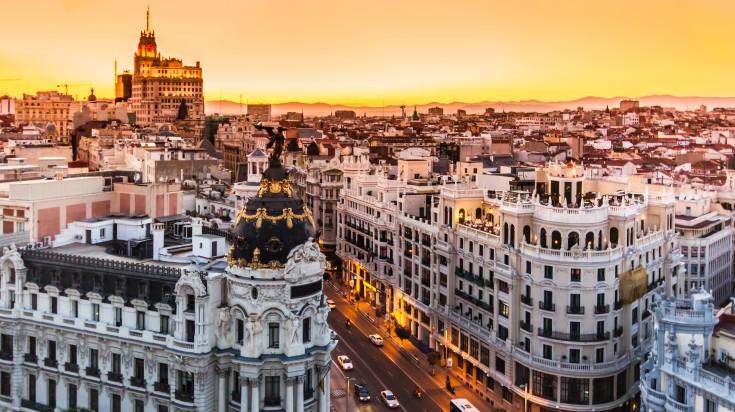
A relatively little-known route that is nevertheless growing in popularity, the Madrid Route offers stunning vistas away from major towns and plenty of solitude for quiet reflection.
Highlights
- Spanish capital of Madrid as well as other historic towns such as Segovia and Valladolid
- Mainly follows footpaths rather than busy roads
- Madrid easy to reach with excellent international connections
Lowlights
- Optimal weather conditions for this route are limited to a short period of the year
- From Madrid to Segovia, accommodation is limited
Route facts
| Start location | Madrid |
| Distance | 696 km |
| Duration | Around two weeks |
| Difficulty |
Generally easy. The first section is the most difficult. |
| Best time to go | Early Autumn (April to May and late September to early October) |
Cycling: Almost the whole route is suitable for cycling.
8. Camino de Finisterre and Muxía

Different from other Caminos in that it starts at Santiago de Compostela rather than ending there. This route is a popular extension that takes pilgrims to a point on the coast that was once believed to be mainland Europe’s westernmost point — Finisterre.
Highlights
- Finisterre, ‘the End of the World’ on the Costa da Morte, the ‘Coast of Death’
- The Santuario de Nuestra Señora de Barca in Muxía
- Rugged Galician countryside and pretty towns and villages along the way
Lowlights
- Galician weather wet year-round
- Not as well-marked as other routes, although the situation is improving
Route facts
| Start location | Santiago de Compostela |
| Distance | 89 km to Finisterre, 29 km further to Muxía |
| Duration | 3–4 days to Finisterre, 1 day more to Muxía |
| Difficulty |
Moderate. Route passes through hilly country. |
| Best time to go | Summer (July to August) |
Cycling: Most of the route is not suitable for cycling.

Good to know
- Compostela: At Santiago de Compostela, the authorities issue a compostela, a certificate to prove you have completed the pilgrimage. Pilgrims are required to walk at least 100 km on foot or cover 200 km by bicycle to qualify. For those not doing the walk for religious reasons, a certificado is available instead.
- Accommodation: Accommodation is usually in albergues, dedicated resting places for pilgrims, or refugios, basic hostels providing dormitory facilities. They are located every 10–20 km along all the routes. Prices are cheap and facilities are basic. More comfortable accommodation is available but the prices are obviously higher.
- Credencial: A credencial is a pilgrim passport that proves the holder is on the Camino trail pilgrimage and is required if you want to stay in albergues. You can acquire one from your local pilgrim association. They are also available at the albergue at Roncesvalles.
- Waymarkers: Most of the routes are very well indicated, especially on the more popular Caminos. The path is usually indicated by a yellow arrow or sometimes by the emblem of the Camino, a scallop shell. In some sections of the less popular routes, the indications are less frequent and you need to be careful not to miss the markers.
Organized vs independent?
Organized Camino de Santiago tours can take much of the hassle out of organising a trip. This is a better option for those on a Spain trip, as agencies plan the route, offer transport and take care of luggage transfers. They provide information about the places you pass through and provide support in emergencies.
For those who want an authentic pilgrim experience, an independent trip might be better. This means carrying everything on your back, staying in albergues, mixing with other pilgrims, and suffering the hardships of the road — as pilgrims should.
Whether undertaken as a true pilgrimage or just as a personal challenge and whichever route you choose to walk, completing the Camino de Santiago is a once-in-a-lifetime experience and is sure to provide unique memories you will cherish forever.


